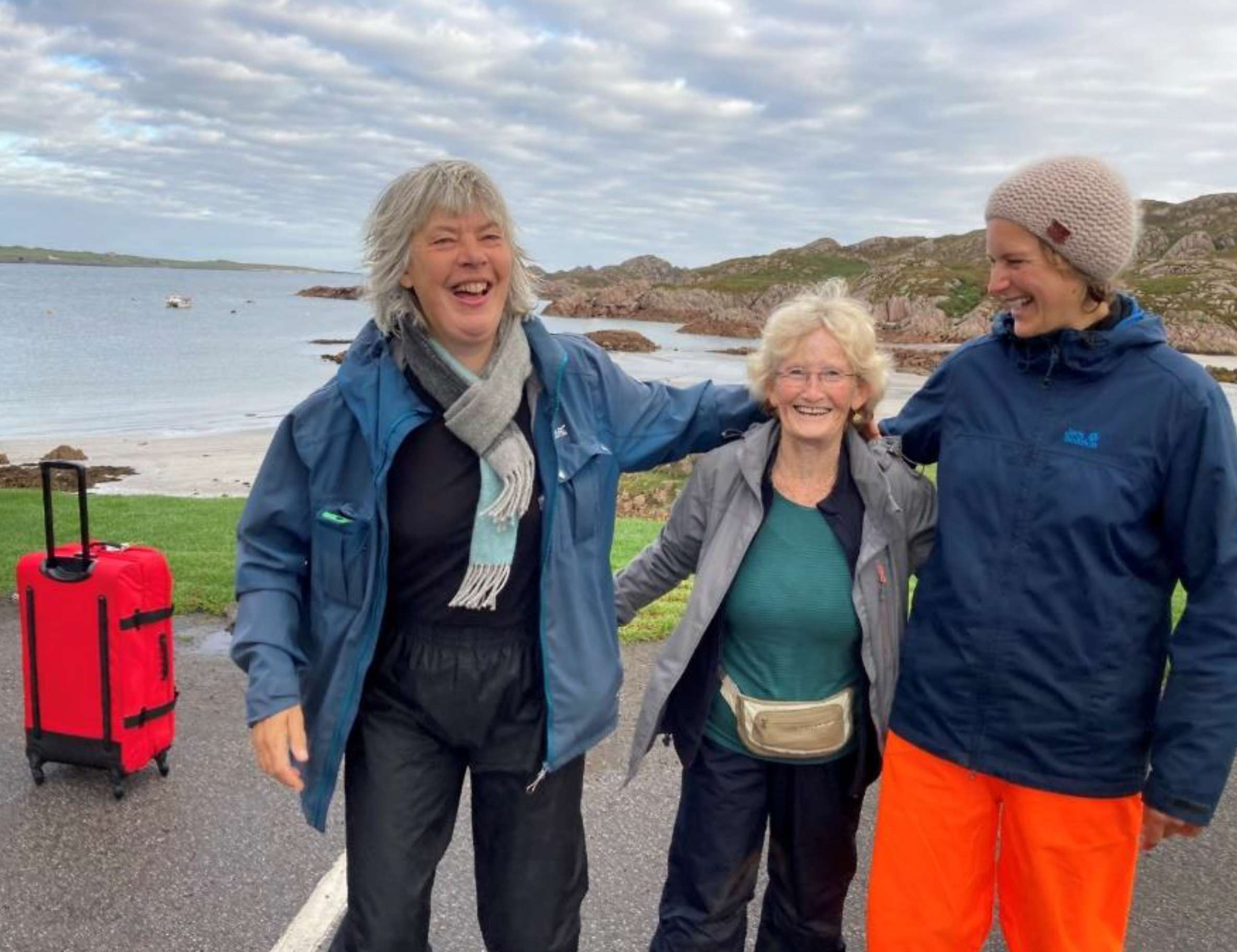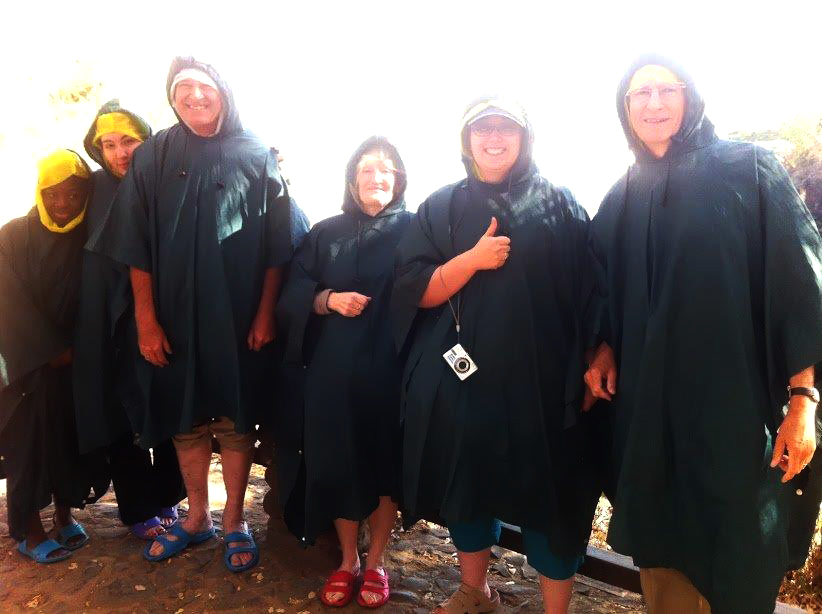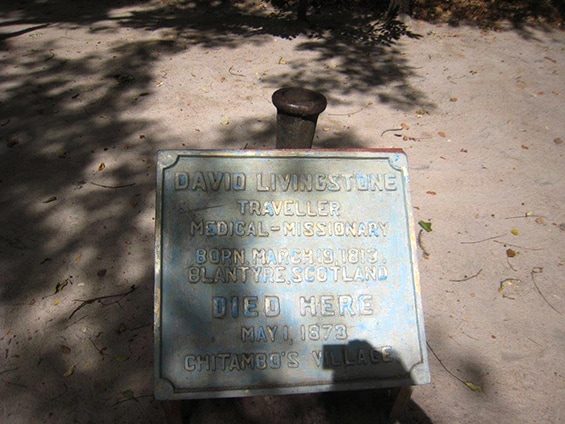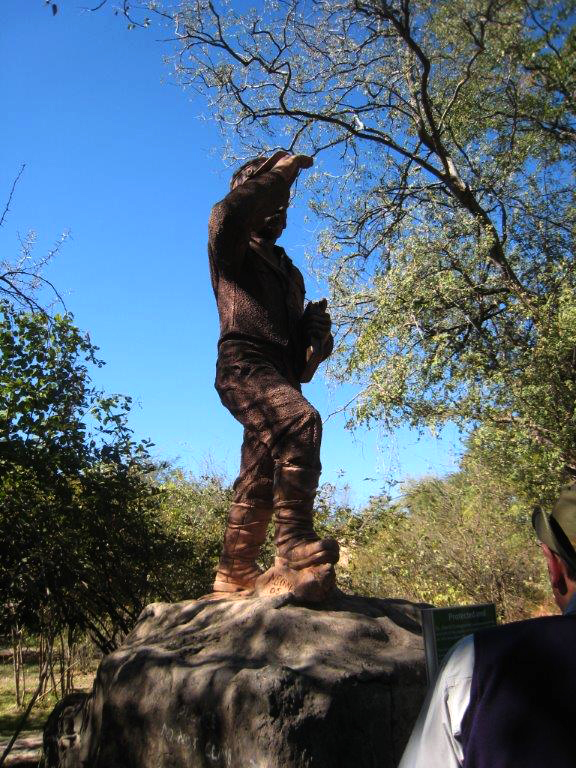11-18 September 2021
Treasure Island, Kidnapped and the Strange Case of Dr Jekyll and Mr Hyde — most can identify and recognise these works of literature, even if they cannot readily name their author — Robert Louis Stevenson. In his novel Kidnapped the hero, David Balfour, is shipwrecked and washed up on a sandy cove on the island of Erraid which lies off the west coast of Scotland. That sandy cove now bears the name Balfour Bay.
Catriona is a less known sequel to Kidnapped, and more than a hundred years after it was written, another Catriona enjoyed one of the most exhilarating swims of her life in that very bay.
What on earth enticed me to strip off stark naked on a not too warm September day and plunge into the Atlantic? Or come to that, why did the name Findhorn ‘just pop into my head’ when I was figuring out how to arrange a stay on a Hebridean island1 during an upcoming visit to my homeland Scotland? The Hebrides are off the west coast; Findhorn is on the east, and had I not always been sceptically dismissive of its ‘new-age’ spirituality?
The small village of Findhorn became the focus of much media attention in the late 1960s and early 70s when pioneer Eileen Caddy and her husband Peter established a spiritual community and cultivated the land which produced remarkably bountiful crops, far outshining those of their neighbours. This success was attributed to unseen, intangible ingredients such as love and prayer. More than fifty years after its establishment, Findhorn is a thriving community which attracts thousands of international visitors annually.
I still did not consider it my cup of tea, but the name had intruded into my consciousness, and I have been around long enough to know that following inspirations or ‘inklings’ often leads to fascinating and unexpected happenings.
A perusal of the Findhorn website led me to a link to an off-shoot community on the island of Erraid — I know this island! I wanted to visit. It felt right. There were just too many serendipitous connections.
The name Erraid was familiar to me not only because of Robert Louis Stevenson’s novel.
It is a small tidal island precariously connected by a thin umbilical stretch of sand to its mother, the island of Mull and a short sea crossing from its more famous sibling, Iona2.
About one mile away on Mull, is the village of Fionnphort. It was here that I, born under the sign of the Crab, celebrated my fifth to twelfth birthdays, on holiday with my family, as well as some Easter vacations in my teenage years.
For almost one hundred years, Erraid was home to several lighthouse keepers and their families3, and as a child I would sometimes walk with my father to where we could look over the narrow strait between Mull and Erraid and see the row of abandoned cottages, neglected since the withdrawal of the occupants in 1952.
This row of stone cottages always seemed to me slightly sinister and surreal. Little did the child Catriona know that more than sixty years later, she would spend a week in that once ghostly settlement.
A welcoming e-mail in response to my enquiry, offering at short notice a space as a retreat guest — from J.: ‘I notice you live in Germany. I am German’ — sealed my decision.
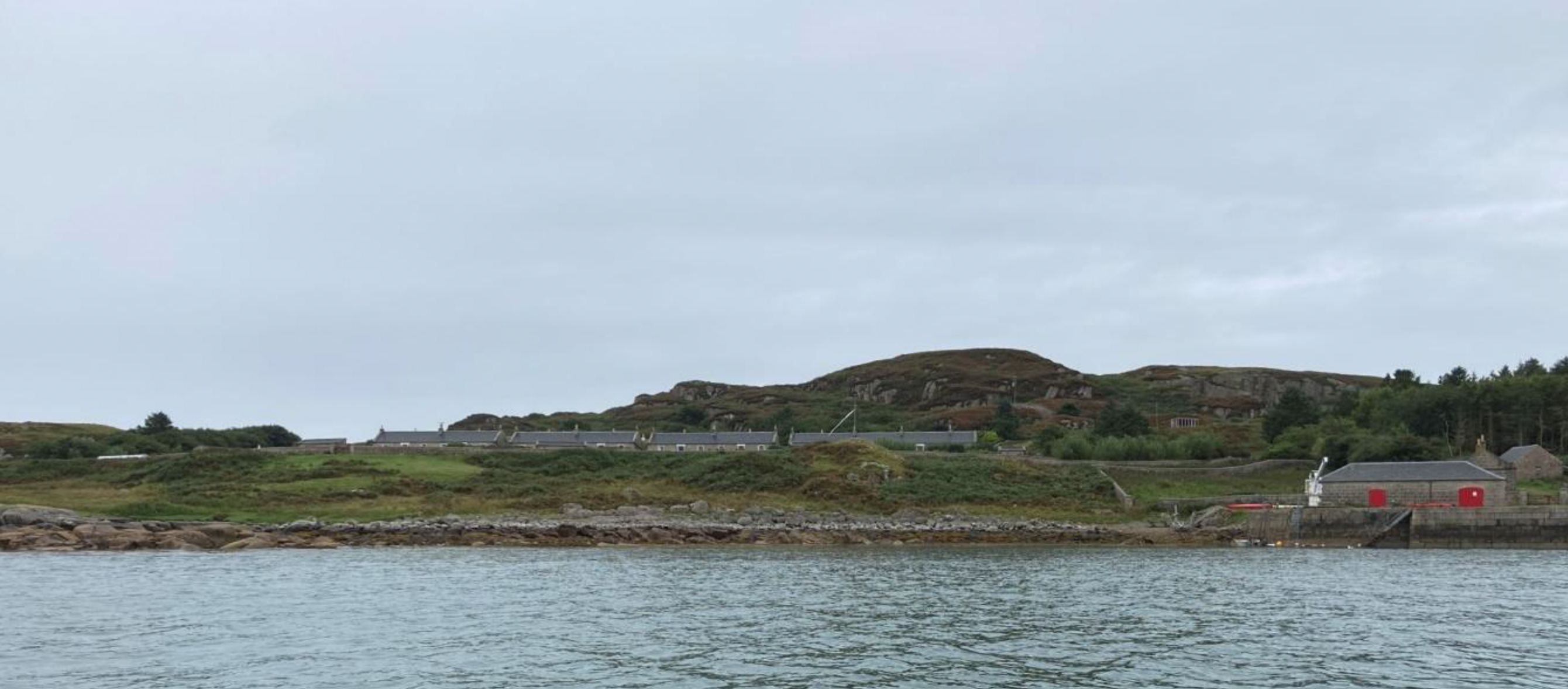
The involvement of the Findhorn community on Erraid started in 1976 when a Dutch family bought the island with its abandoned lighthouse keepers’ cottages. This family had spent time at Findhorn, were inspired by its vision, and made a proposal to financially support members of the community to act as custodians of the island and to restore the cottages, in return for which the Dutch owners would spend one month on Erraid each summer. This arrangement has worked well and over time the Erraid group has become largely self-sufficient, is independent from Findhorn and relies on the Dutch owners only for major financial outlays.
The community on Erraid has developed its own way of life and spirit. One of the Erraid staff spoke somewhat disdainfully of the superficiality and ‘other-worldly’ sophistication which she feels Findhorn has become. An impressive attraction of the Erraid community is its healthy balance of spirituality or internal focus, and plain, roll-up-your sleeves, no-nonsense down to earth hard work.
It is mind-body unity manifested on a community level.
Guests are welcomed in different categories; a ‘retreat guest’ is left to their own devices, although a minimal degree of participation in activities such as meditation, meetings and meals is expected. A ‘love in action’ helper pays less and spends some time involved in the many tasks such as garden, kitchen or maintenance work, and a ‘worker’ will commit to a longer stay and offers their services for whatever needs to be done in return for board and lodging.
The cottages have been renovated and have electricity (and even WIFI, albeit a temperamental one) and modern kitchens and toilets, although the staff prefer to use the outside compost toilets. There is a heating system, but the wood must be chopped, and a fire laid before the pipes and heaters can function to heat the cottage or provide warm water in the bathroom. And of course, the grate must be cleaned out in the morning chill and the fire re-laid.
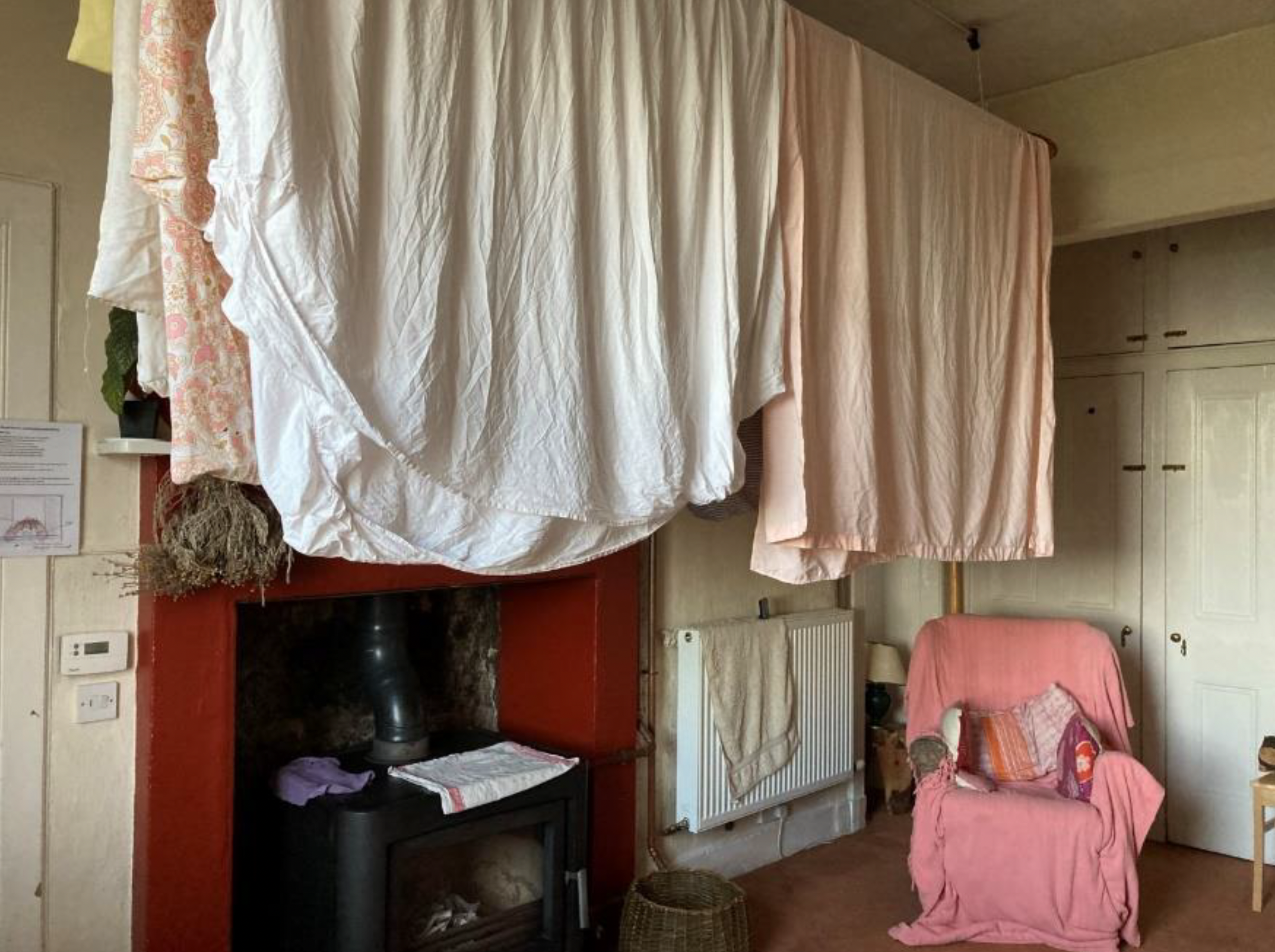
Each of the members opens his or her cottage home to whichever guests register to stay. My hostess was the person from Germany who had responded to my mail; a delightful young woman who had trained as a primary teacher, then as a practitioner of complementary medicine (‘Heilpraktikerin’) before discovering Erraid when she experienced the breakdown of a long-term relationship. To become a member, the applicant must have spent some weeks as a worker, have been deemed as suitable after an ‘attunement’ with the rest of the staff, and make a commitment to a minimum of one year’s involvement. I was told that the longest period of residence had been ten years; more usual was a stay of three to five years.
All kinds of people are attracted to visit, but it takes a special kind of person to stay as a member and endure the long hours of winter darkness when gales lash the island and there is often complete isolation from the mainland when even an experienced boatman would not take to sea.
The Erraid week starts on a Saturday with arrivals and departures. Dinner on Saturday evening is followed by a round of introductions where each can say as much or as little as desired about their situation and what they expect (or have gained) from their stay. We were a small group that week; four members and five guests. I was the only retreat guest, and interestingly, the only native-born Scot present. I related about my childhood connections with Mull and Erraid and touched on my own spiritual journey, including quite naturally my involvement with the Unification Church.
Interestingly, there is a connection between Findhorn and the Unification movement; one of the first members to join Eileen Caddy in the original Findhorn community was a young Dennis Orme, whose name is familiar to many older Unificationists, and certainly to those from the UK. In 1968, the spiritually attuned Unification missionary Doris, who had received ‘a message from the Lord’ went to Findhorn to witness to her faith. Dennis responded. They were subsequently blessed in marriage by Rev. Moon and were appointed as leaders of the British Unification movement which they headed for several years in the 70s and 80s.
Shortly after I had told my story, D., an English woman eight years my junior, approached me. In 1979 she had met an Australian woman and an Englishman in the San Francisco Greyhound station and had been invited to an evening programme in a community house on Bush Street. In the same year, I too had been approached by a couple in San Francisco and had attended an evening programme in the same community house. We had both been intrigued and inspired by the purity, enthusiasm, and idealism of the young people; I had responded to the invitation to join them ‘for a couple of days on our land in Northern California’; for D., alarm bells started to ring. She had been warned about the friendly but devious Moonies who would whisk her off and brainwash her. She could ‘escape just in time’. This was the first of many fascinating conversations. We speculated about what might have happened had she made a different choice and chuckled together about the kind of match that Rev. Moon might have made for her.
The day on Erraid is structured, but not rigidly so.The first scheduled meeting is meditation in the hillside ‘hut’. The view from this spot is so spectacular that it always seemed to me a waste to close my eyes.
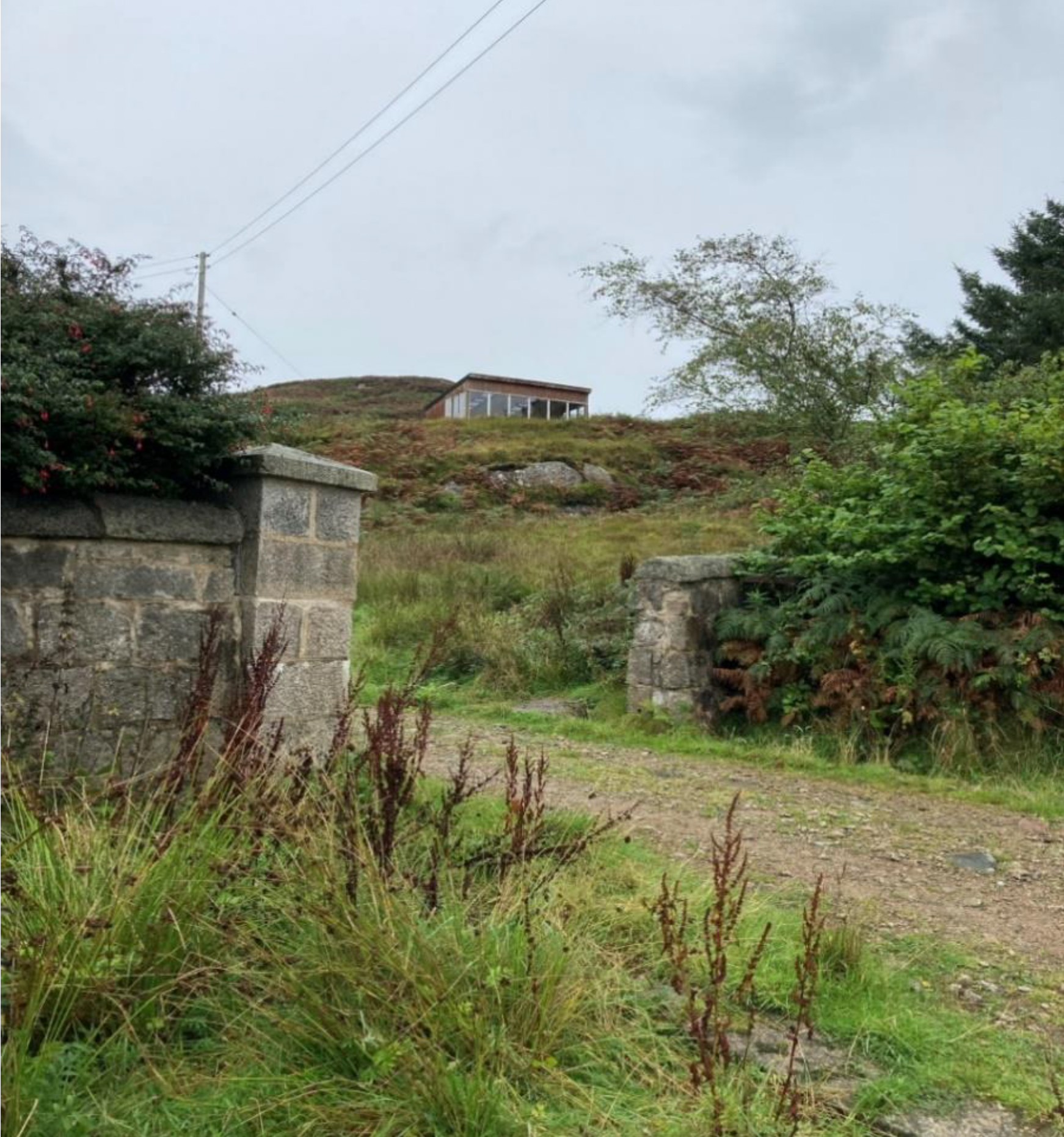
The first and last meditations of the week are guided, otherwise one is free to liberally interpret ‘meditation’ providing that silence is observed. Then follows a meeting and the designated ‘focaliser’4 for the week offers a blessing followed by a spiritual reading. J. chose readings from Eileen Caddy’s book Opening Doors Within which is a collection of inspirational writings for each day of the year. Much of what she penned resonates with the writings of another spiritual leader, Rev. S.M. Moon, and I am pretty sure that it would have been quite acceptable had I volunteered to choose readings from his words.
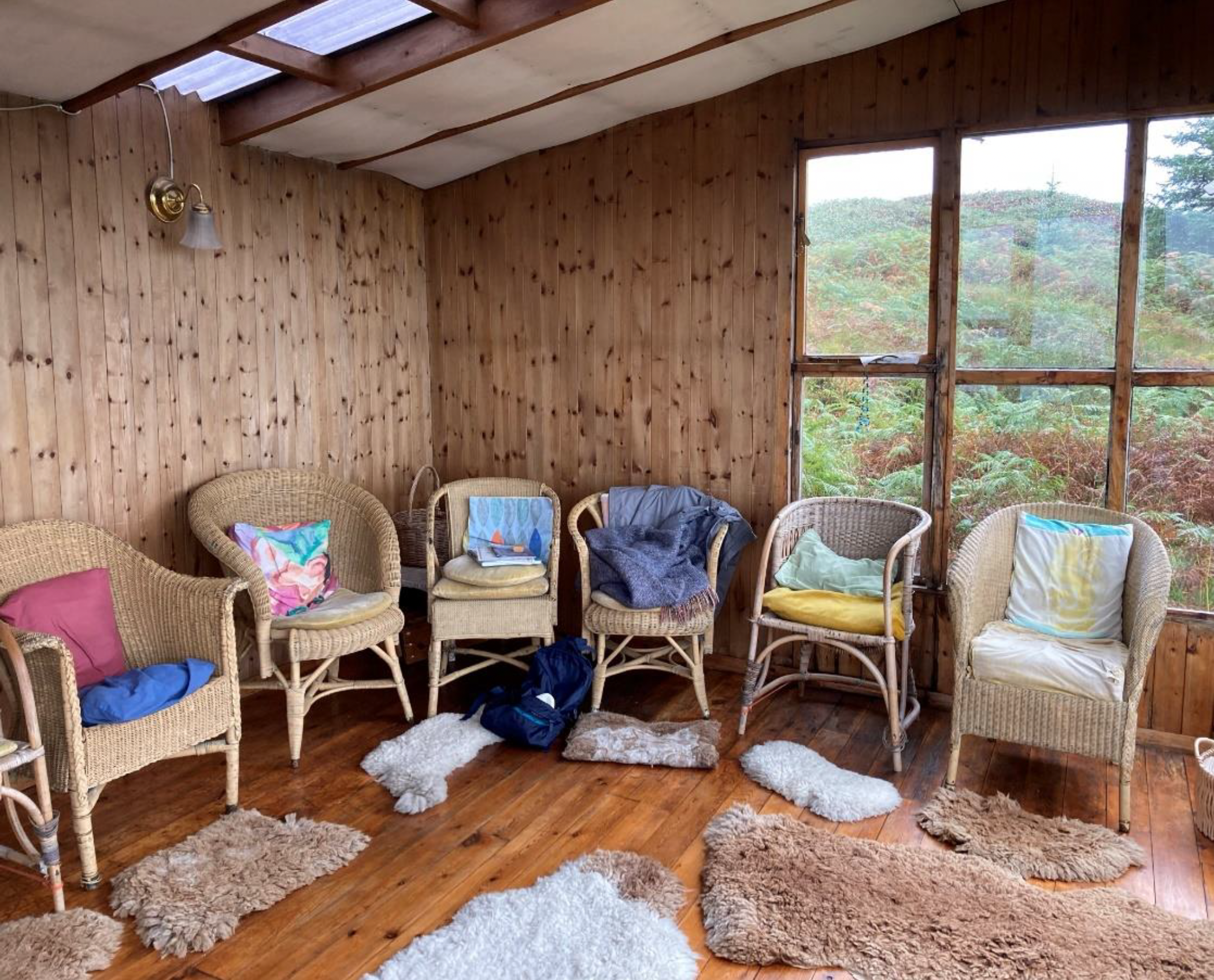
Then the work assignments for the day are allocated; the members report the tasks to be done and each visitor chooses according to ability and inclination. As a retreat guest, I was not obliged to work, but volunteered one morning when I felt inspired to do so. Otherwise, I simply reported my plans and whether I would return for lunch.
There is again meditation time in the later afternoon, followed most days by a communal dinner.
For all group meetings and blessings, we held hands in a circle — a practice with which I felt entirely comfortable. I reflected wryly that even practices which I tend to view with some scepticism seemed quite natural and even meaningful, such as the sending of good energy on extinguishing the candle, or the picking of an ‘angel card’ after the first meditation of the week. Mine was ‘birth.’
All activities are announced by the ringing of a bell. This was the favourite job of four-year-old F., who ran up and down outside the cottages until even the sheep on the far side of the island knew it was time to eat or meet. He and his mum, a single parent, could be there thanks to a bursaryscheme; she told me glowingly just how much they both had blossomed in their short time of residence.
The Dutch owners are not involved in the day to day running of the community and there is no designated leader or supervisor. Yet all seems to function very harmoniously. The residents have a real sense of ownership and responsibility and there is continuity of care when members move on.
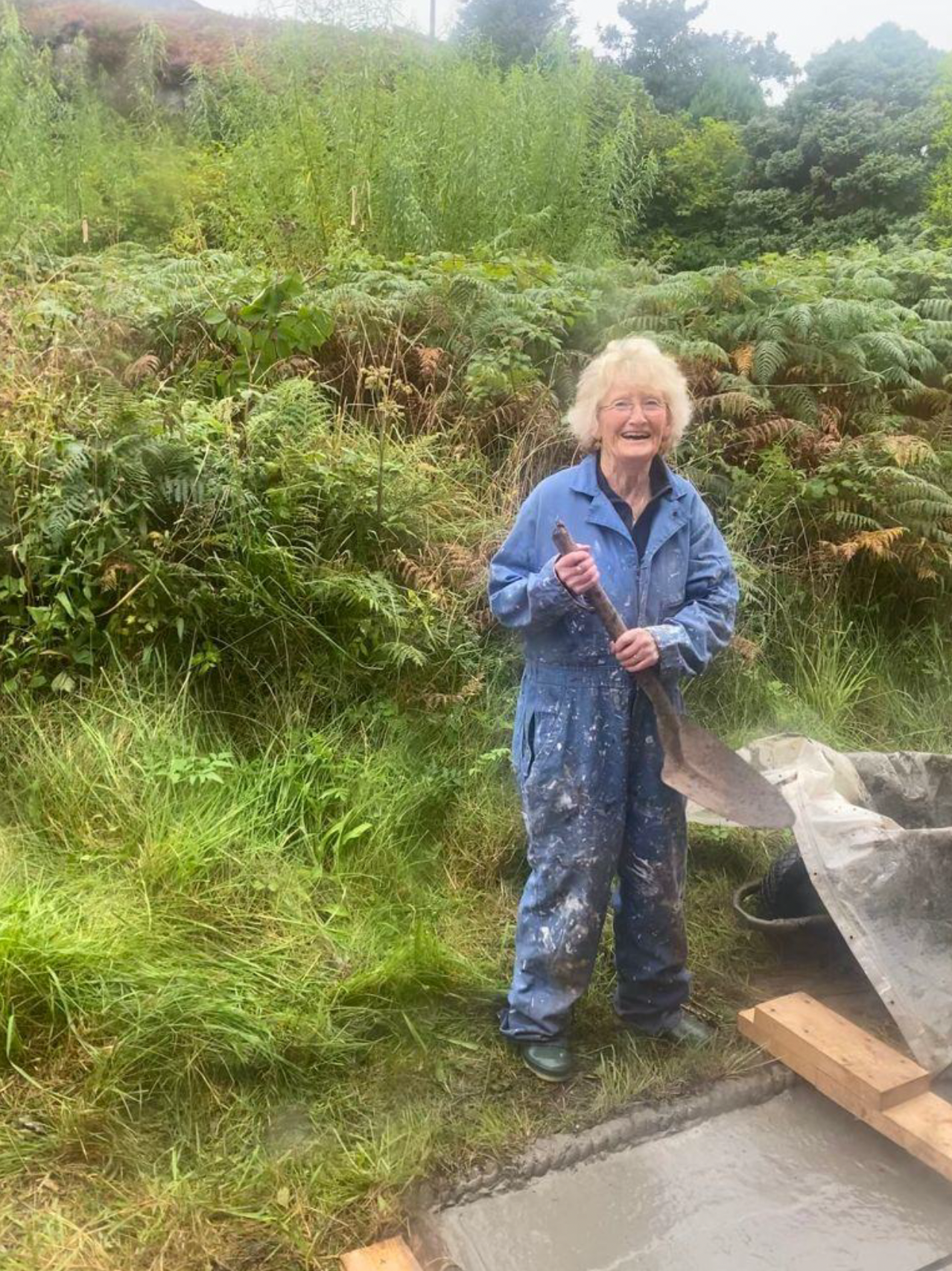
I spent one day revisiting Fionnphort and my old childhood haunts, one day on Iona, and one day tramping the moors in search of an abandoned settlement. The population in many parts of the Scottish Highlands was decimated in the 1800s when brutal landlords forcibly evicted the crofters, considering sheep to be more lucrative inhabitants of the land. Mull suffered massively during these Clearances and the remains of long abandoned settlements are to be found in several parts of the island. My interest and curiosity were stirred when P. told me of one such village nearby. I vaguely remembered having heard my father talk about it. I wanted to explore. This turned out to be a challenging and somewhat scary experience, pushing me to my physical and emotional limits.
I greatly enjoyed the tramp to the village which consisted of the roofless remains of about half-a dozen stone cottages, nestled in the bracken and heather. That very undergrowth proved to be my downfall; the track took me through bracken that towered over my head and obscured my vision, and on the way back I strayed from the path. The terrain was boggy and obstructive, and progress considerably slower than when on the track and one hillside or clump of heather looked the same as the next as I sank thigh deep into bogs and negotiated dense thickets. Although I was never in real danger, I was becoming physically exhausted and more than anything concerned that the staff would be alarmed at the non-appearance of the lady who so keen to prove that she was tougher than she looked. Hadn’t they all made admiring, respectful comments about my being so active for my age? I had a reputation to uphold! The phone reception was unreliable, and I sank into the heather, exhausted. Whether it was my desperate prayer or sheer good luck, shortly afterwards I found the path and with renewed energy could make my way back. Every year there are deaths on the Scottish hills, and this experience took me one step nearer to understanding why.
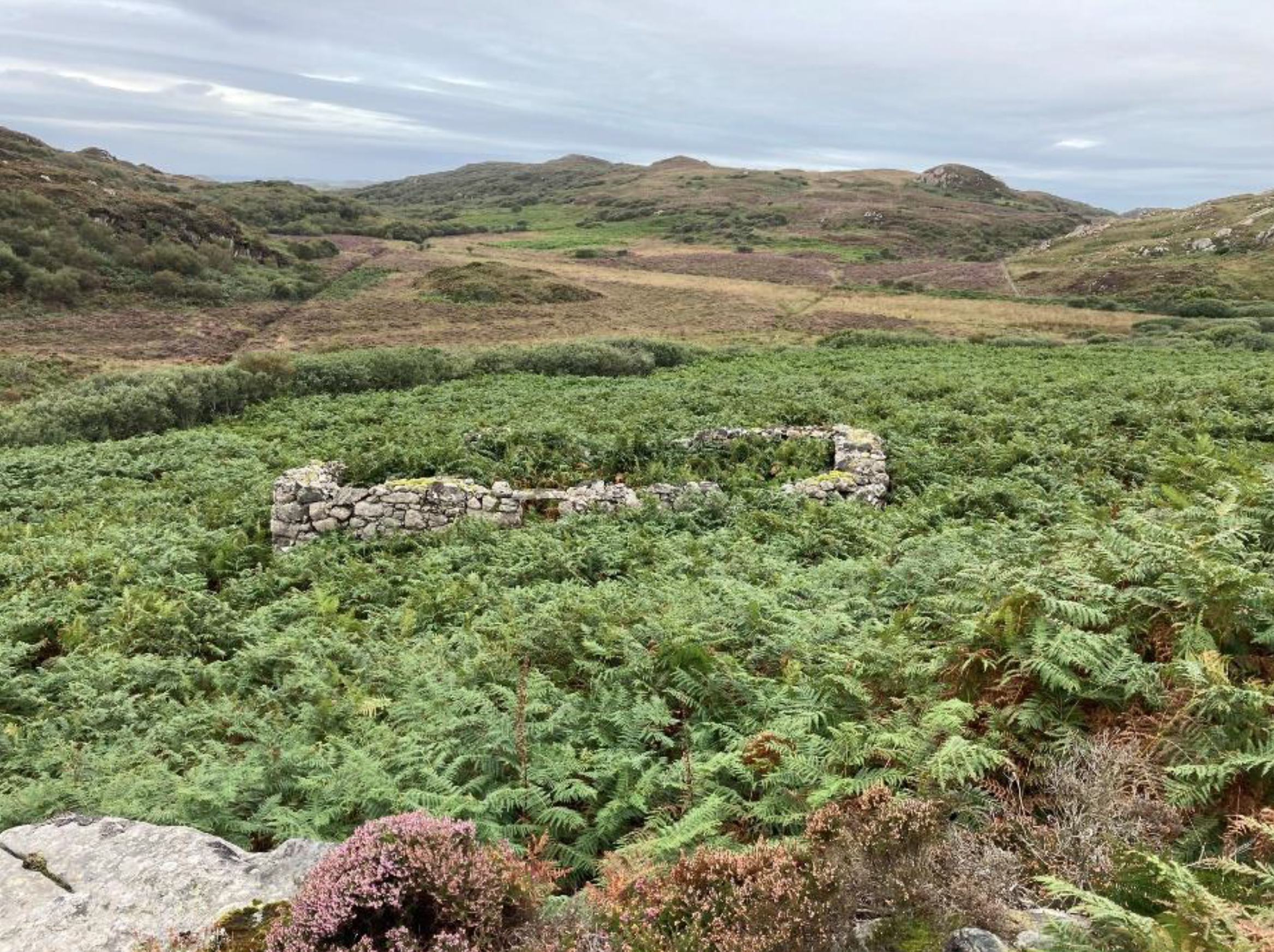
And that swim?
Balfour Bay was deserted apart from we five women: the sand pristine, the sea clear, calm and inviting. To humour my hostess, I had brought my towel ‘just in case’. I had no intention of swimming in a decidedly chilly Atlantic. Paddling-maybe. Swimming-absolutely not. But the others were stripping off and suddenly I was doing the same. I felt compelled to swim. The water was cold. Very cold. Just a few strokes and then I’ll get right back out. But then an amazing transformation took place. It was no longer so cold. It was not warm, but I was enjoying myself. It was uncannily exhilarating. I would have stayed in longer, but the others were all scrambling into their clothes. What was my angel card? – ‘birth’. Water. Hmm….
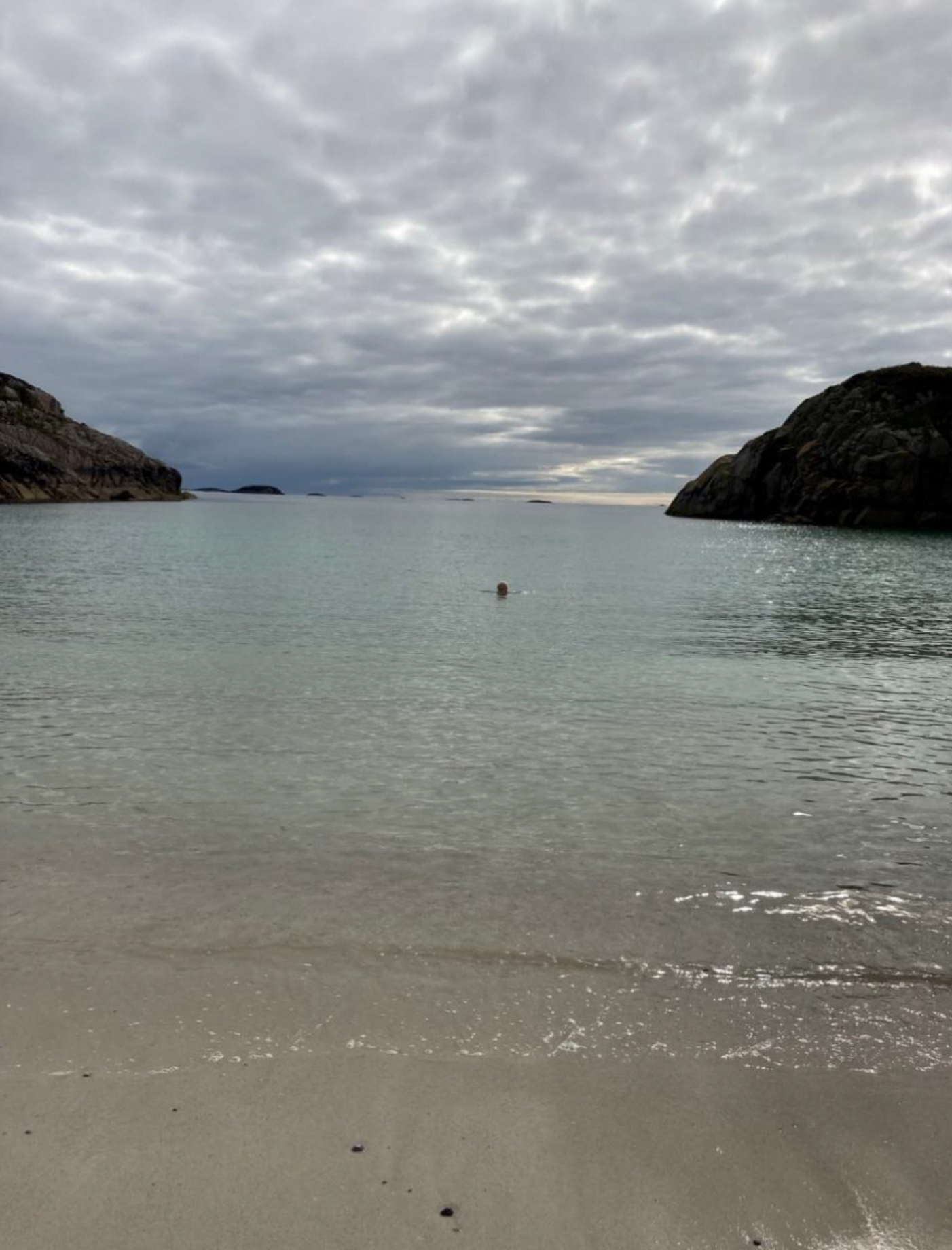
The decision to visit Erraid was one of the very best that I have made it my life. There I could experience the solitude and overwhelming beauty of a Hebridean island but could share the fellowship of an embracing and open-minded group of people who have managed to sustain a community which combines in a natural way, spiritual principles with common sense attention to physical realities.
The Findhorn community states that it is: an international living laboratory for transforming human consciousness in everyday life. One could also say: peace starts with me.
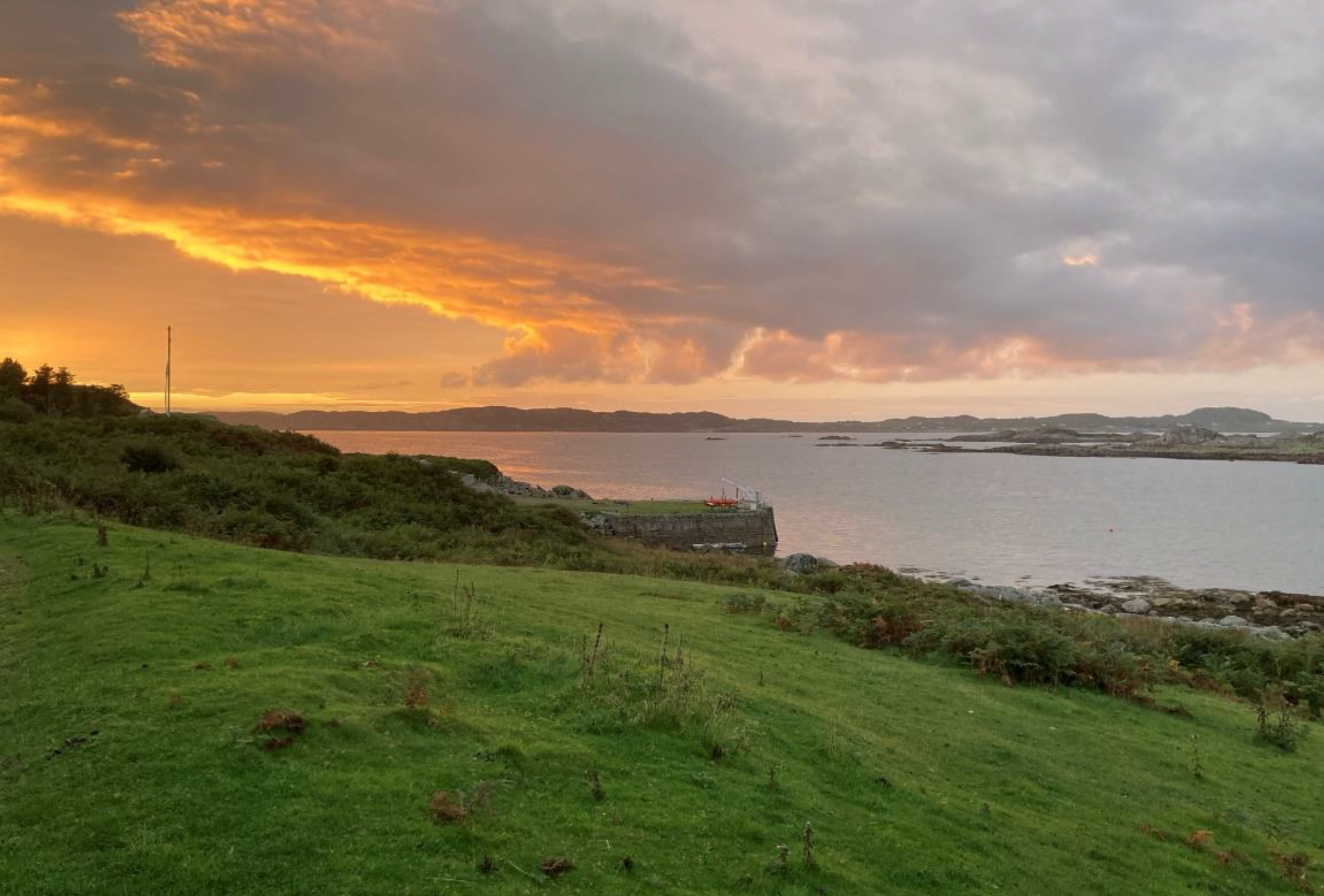
For further information go to: www.erraid.com/visits/
The Erraid community was featured in the Ben Fogle British TV series ‘New Lives in the Wild’ , Channel 5, 21.09.2021. This episode can be accessed and viewed, unfortunately only by UK residents.
1. Hebrides — an archipelago off the west coast of mainland Scotland. There are two groups — the Inner and Outer Hebrides. Erraid, Mull and Iona all belong to the Inner Hebrides.
2. Iona is where St. Columba who brought Christianity to Scotland, made his base. Today the famous Iona Abbey and community attracts (not only) Christian pilgrims from all over the world.
3. Robert Louis Stevenson may have disappointed his father, Thomas in turning his back on the family tradition of engineering. Stevenson senior masterminded the design and construction of many lighthouses around the coast of Scotland, including two which gave warning of the treacherous Torran rocks off the coast of Erraid.
4. The members rotate as ‘focalisers’ with the responsibility of heading up the weekly activities
Dear Visitor
We rely on donations to continue funding projects in Africa and the UK. Sunrise Africa Relief chooses carefully areas where your donations can make a real impact whilst providing strict oversight to ensure those needing our help receive it. So, you can be assured your donation will be used towards a good cause. We would greatly appreciate any donations you can make. Thank you.

